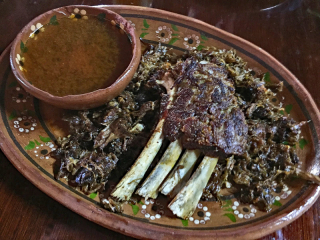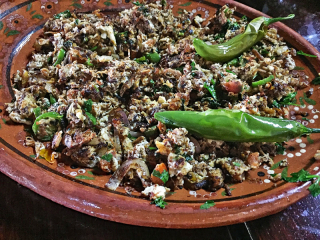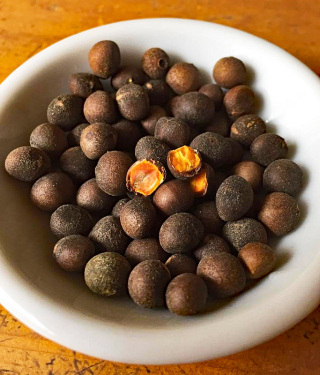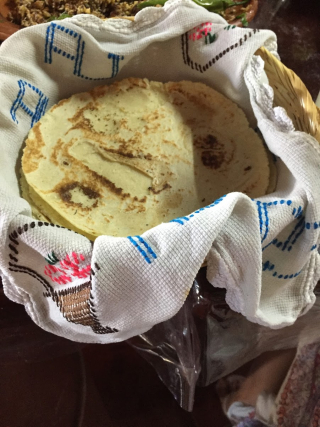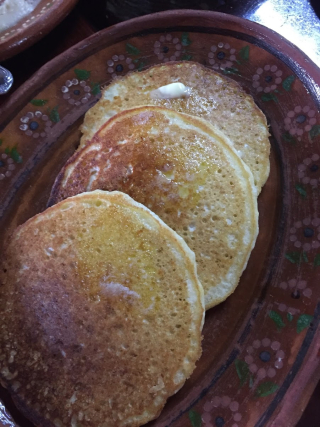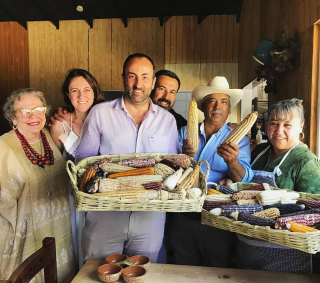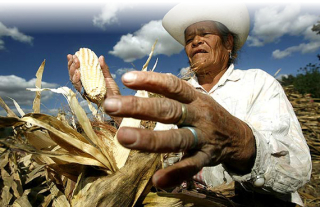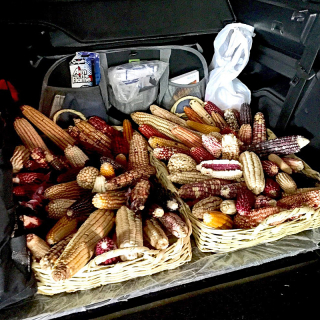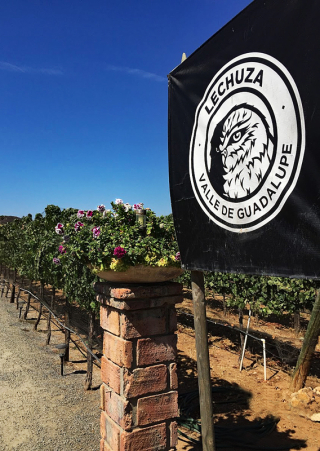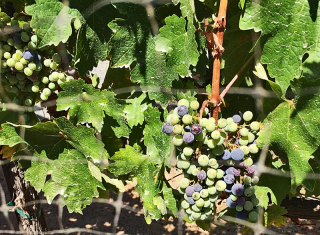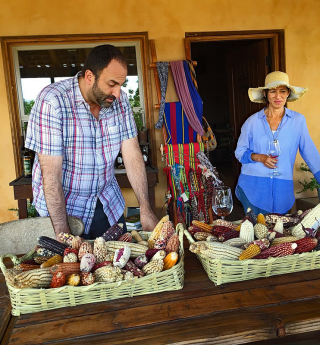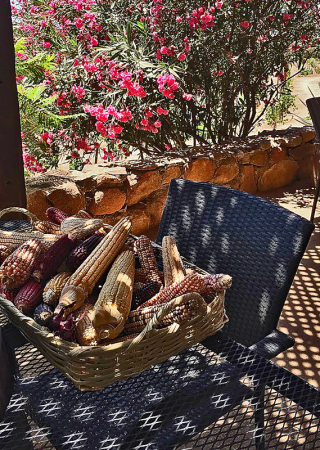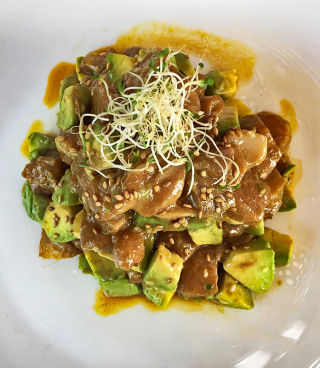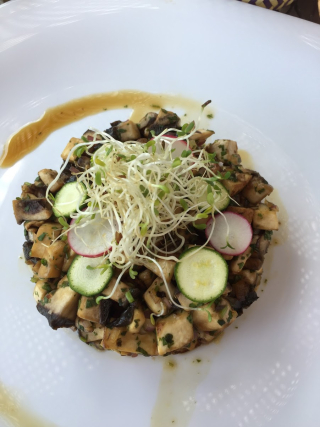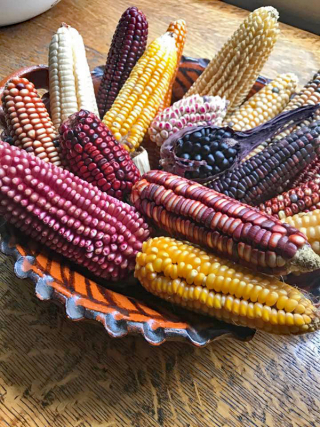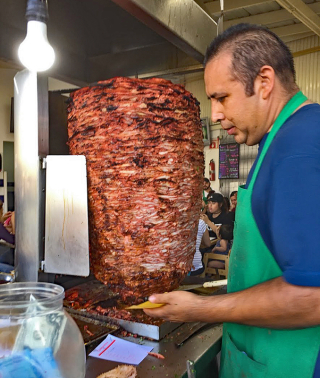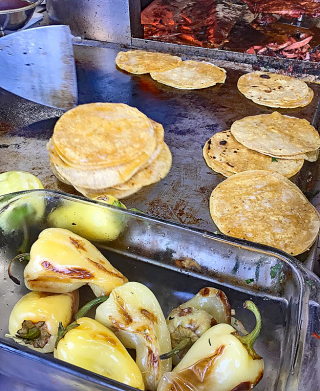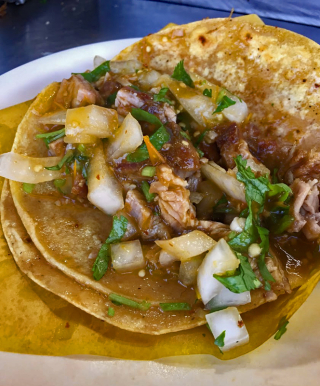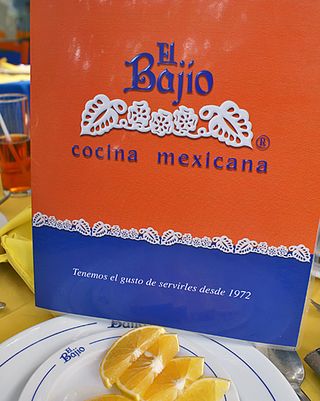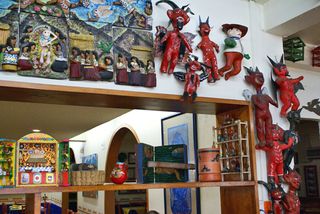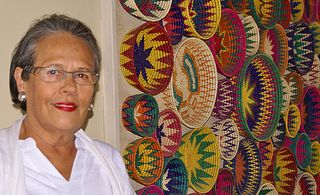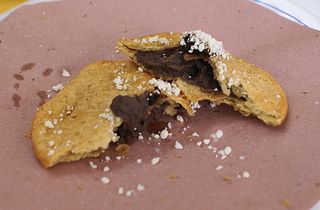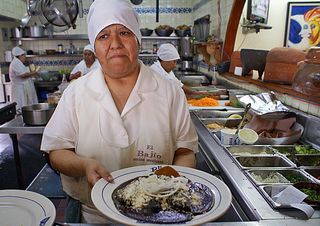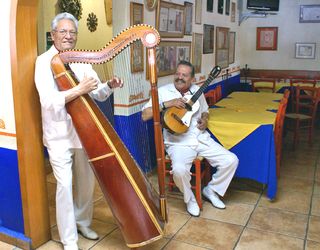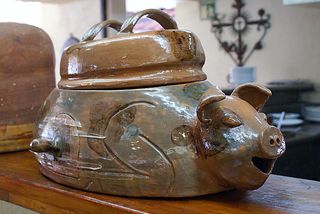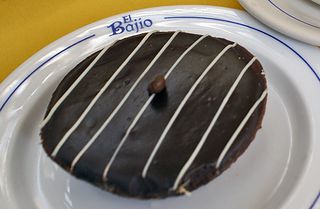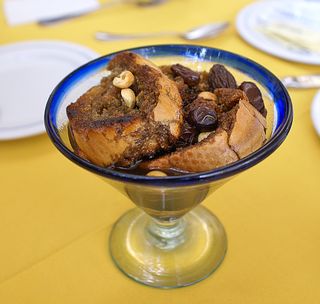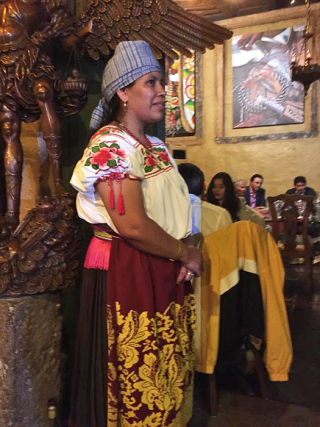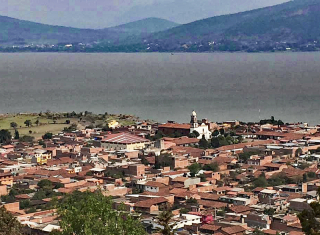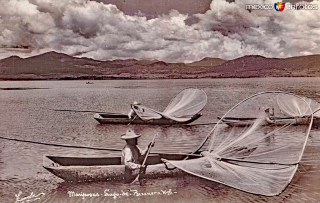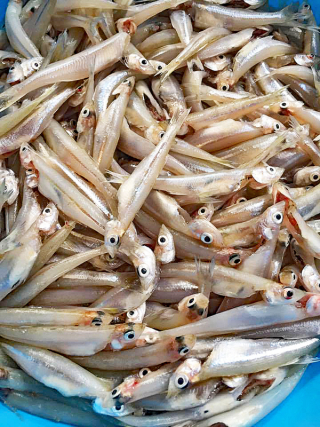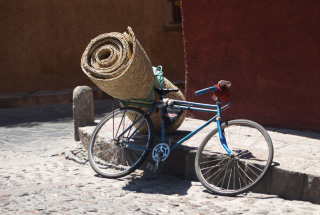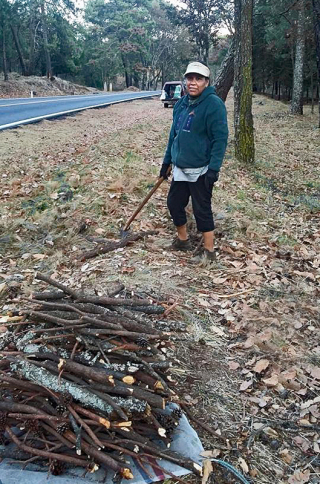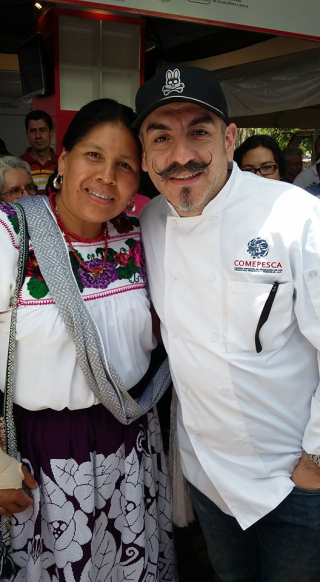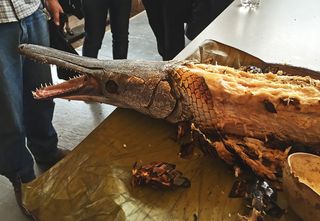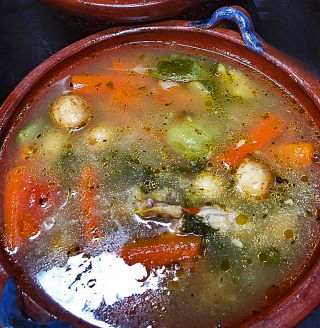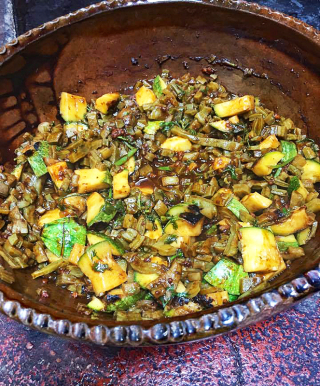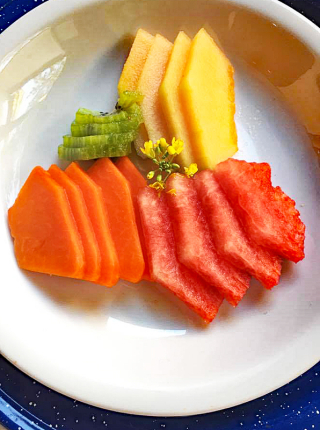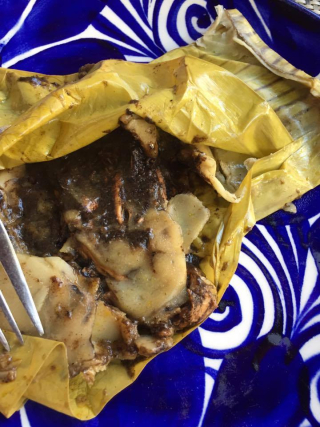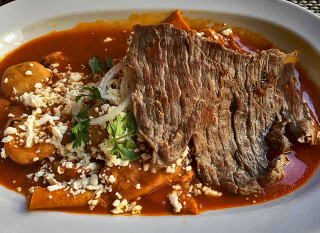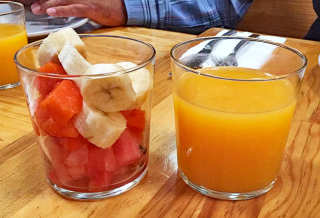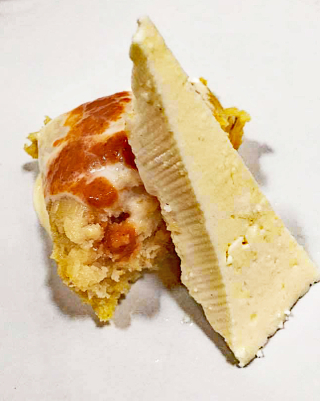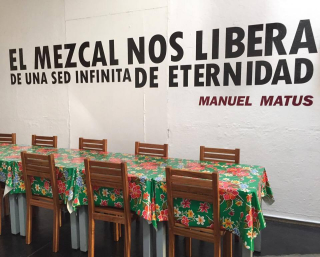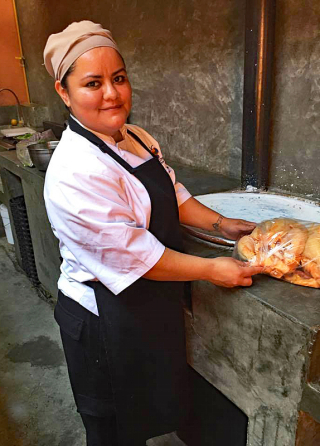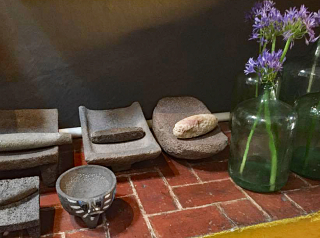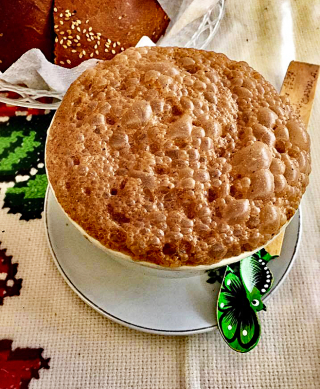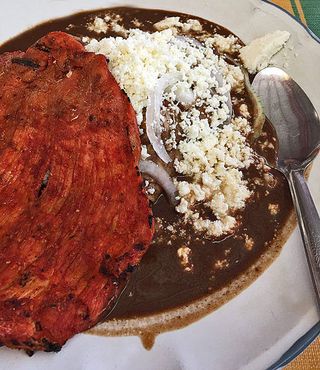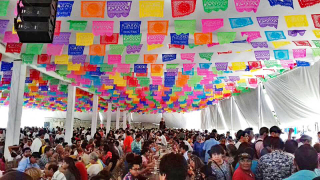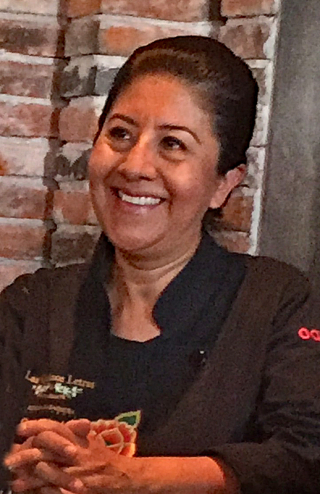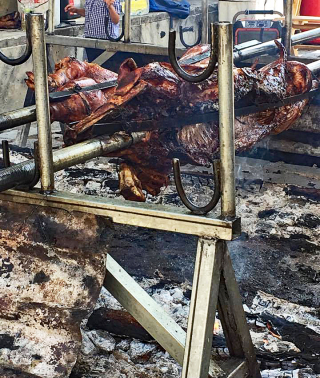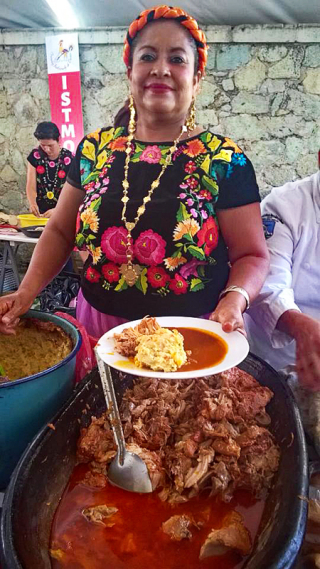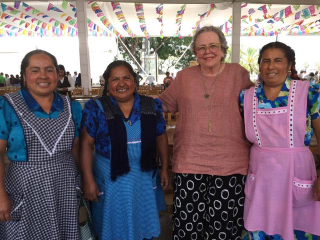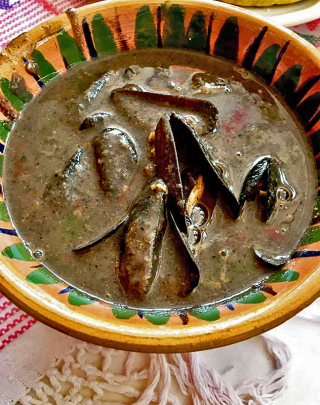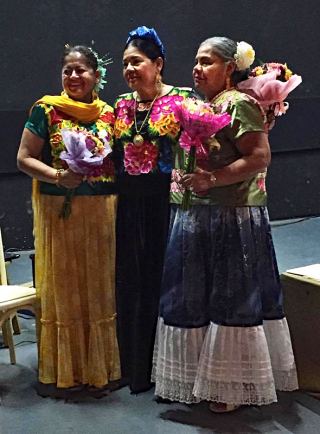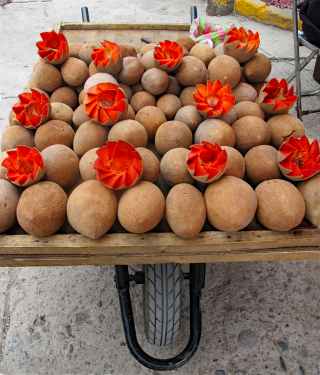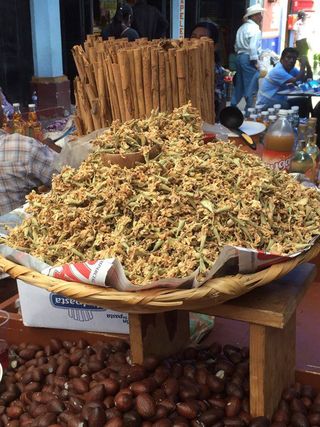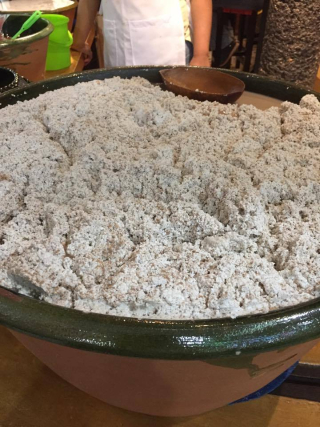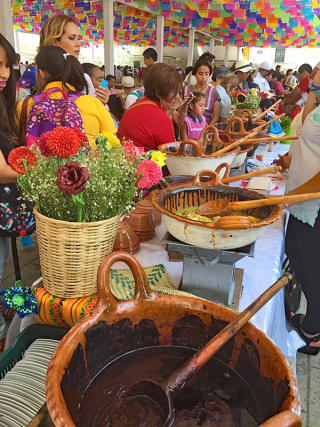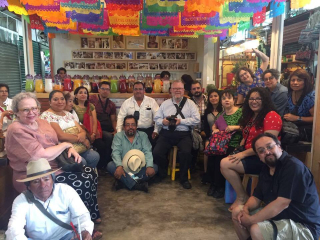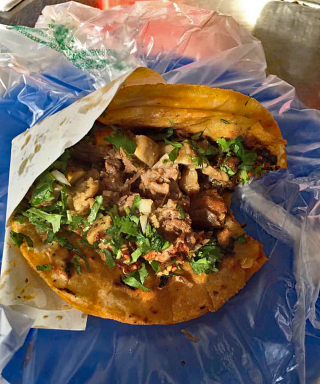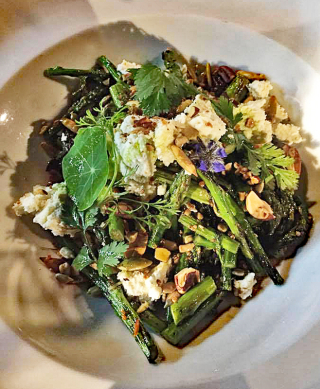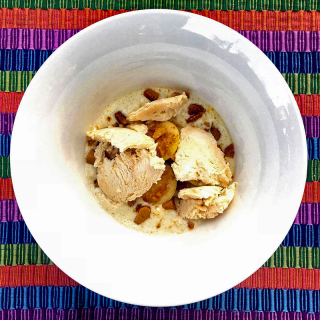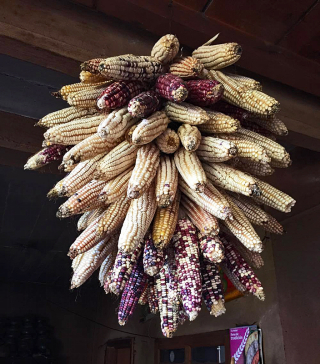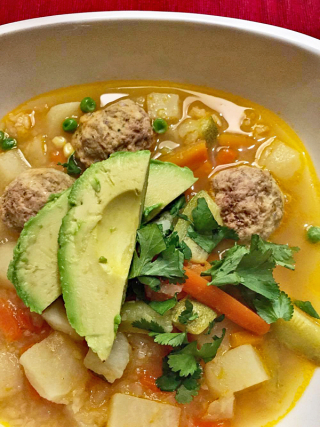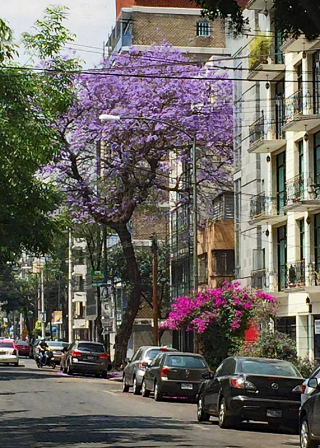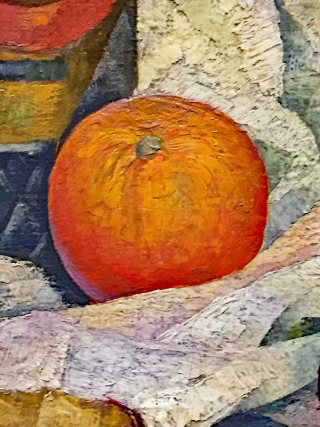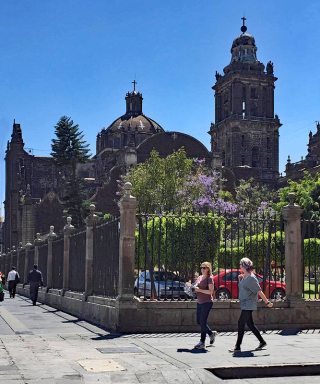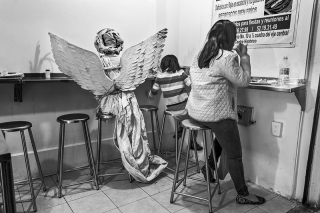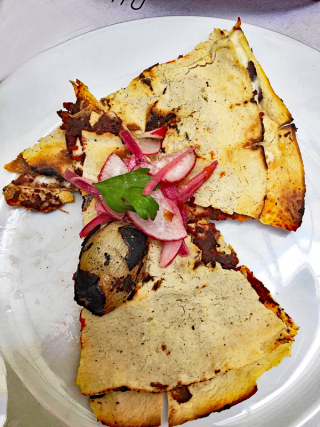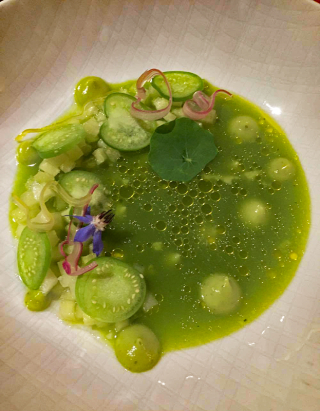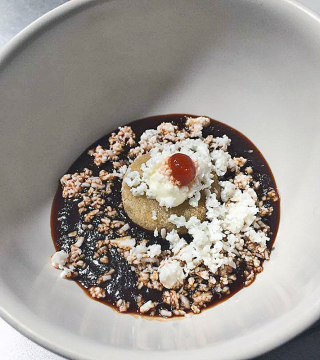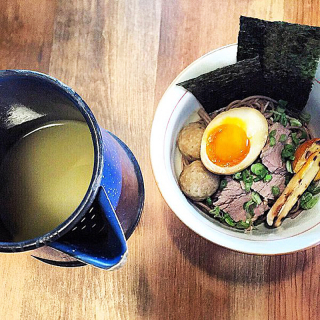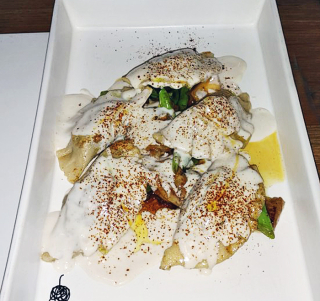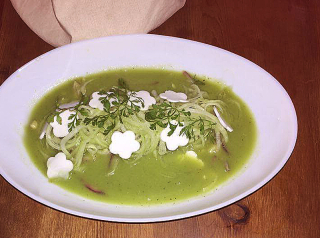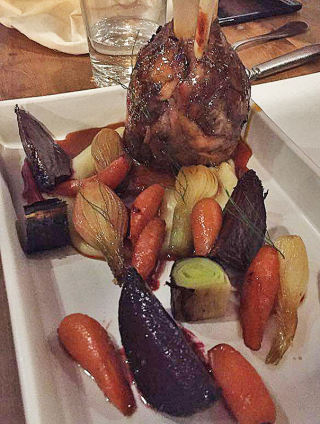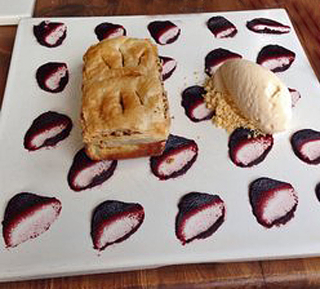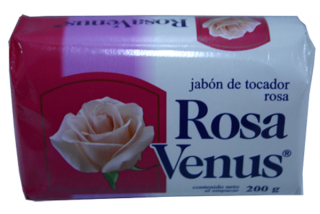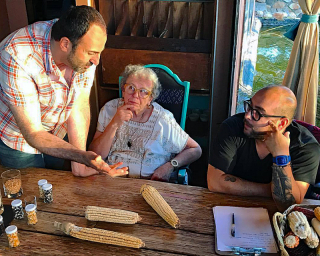
At Restaurante Corazón de Tierra, Valle de Guadalupe, Baja California. Headed up by renowned chef Diego Hernández Baquedano, Corazón de Tierra was named number 39 out of 50 on the San Pellegrino 50 Best Latin American restaurants list for 2016. Rafael Mier gave a presentation about Mexico's native corns to chef Diego and the restaurant's entire kitchen crew and wait staff. Chef Diego closed the restaurant for two prime evening hours so that he and his staff could take part in the class; we felt very honored. Left to right: Rafael Mier, founder of the non-profit foundation Tortilla de Maíz Mexicana, Mexico Cooks!, and extraordinary chef Diego Hernández.
Unlike the lush central and southern areas of Mexico, Baja California grows almost no corn. Most of Baja California is arid, the mountains are rugged and barren, and the temperatures are extreme–the state capital, Mexicali, can have mid-summer temperatures as high as 110ºF and winter lows in the low 40ºs. Because there is little to no rainfall over much of the state, many of its successful crops (wheat, red tomatoes, and onions are the principal products, followed by strawberries and cotton) are grown using irrigation. Very few farmers grow native corns, and very few people in cities such as Mexicali, Tijuana, and Ensenada are familiar with them. It was particularly thrilling to see Baja California's younger cooks and and restaurant staffs light up when they learned first-hand about their corn heritage.
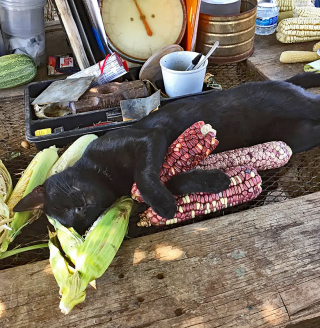
Not everybody listened all the way through the corn presentations, but everybody loved the corn! This little black cat at the Corazón de Tierra gardens pooped out about halfway through a talk and made himself comfortable for a snooze.
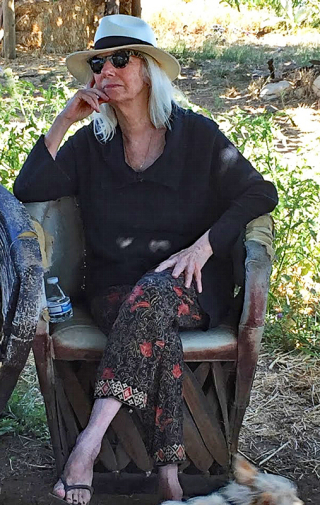
Vena Cava and Corazón de Tierra co-owner Eileen Gregory joined us for the corn presentation given to the gardening team.
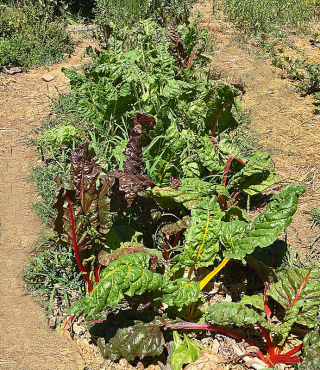
Master Gardener Claire Acosta showed us around the gardens. Here, a long row of organic acelgas (swiss chard). All of the produce from the garden is destined for the restaurant tables. Ms. Acosta tells chef Diego what the gardeners can pick today and he plans his menu around those vegetables.
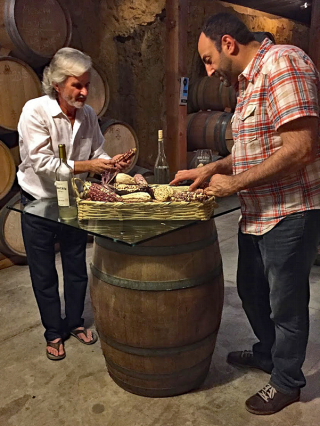
Late in the morning, we went to Vena Cava (Phil and Eileen Gregory's beautiful winery) for one of Phil's delightful wine tastings and many stories about the Gregorys' arrival in Valle de Guadalupe. Here, native corn meets Baja wine!

Would you believe this trip was called "work"? Nah, me either! Our next stop was at Restaurante Fuego Cocina del Valle, a short distance from the Vena Cava winery. Headed by executive chef Mario Peralta, Fuego is part of Hotel Boutique, in the heart of Baja California's wine country. Chef Mario, a contender on the 2016 season of Top Chef Mexico, is part of the new generation of cooks who carry the banner of Baja California-style cuisine, which is best known for making use of the region's seasonal ingredients.
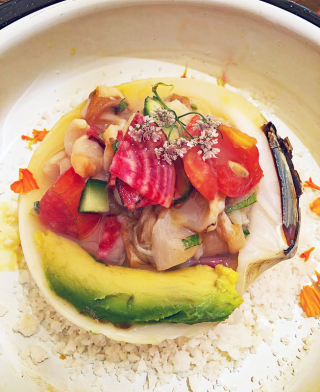
Chef Mario's chileagua, plated in a clam shell on a bed of coarse sea salt. The dish is based on the almeja reina (queen clam), which is joined by pear tomatoes, red zebra tomatoes, avocado, cucumber, chile serrano, cilantro flowers, and cempasúchil (marigold) flowers. On this hot, dry winter day, we couldn't have eaten anything more refreshing. Four or five small courses followed this appetizer, but this chileagua was my favorite.
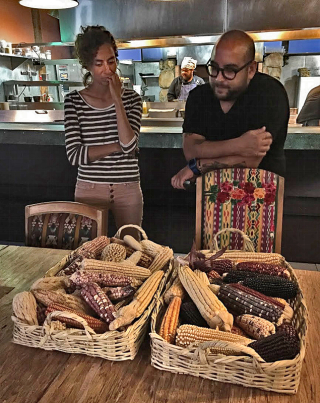
Our final corn stop of the day was back at Corazón de Tierra, for the maíces nativos presentation and then dinner at the restaurant. Here, master gardener Claire Acosta and chef Diego Hernández enjoy looking at the two baskets of native corns.

The menu for dinner at Corazón de Tierra consisted of eight courses, the last of which was a series of three desserts. Fortunately (or not) the portions were served to be shared per three diners. The three tiny kumamoto oysters in the photo above, each as big as the end of my thumb, were meant to be one per person. They were so intensely delicious I would have eaten not only these three, but the three meant for the three people sitting next to me. Everything was delicious, but these oysters in hazelnut butter were my favorite course.
Our Corazón de Tierra courses:
Smoked fish tostada
Kumamoto oysters in hazelnut butter
Salad of tomatoes and tomato water, all from the restaurant's organic garden
Roast beets with two types of smoked garlic, borage, and aged cheese
Lamb taco with stewed swiss chard stems, black radish, and blue corn tortilla
Sea bass with dashi and zucchini-type squash
Potatoes from the organic gardens with chile padrón and 5-year-aged salsa madre
Desserts:
Nopal ice cream with a ginger cookie
Sesame seed ice cream with cilantro cream
Mix of truffles and panacotta
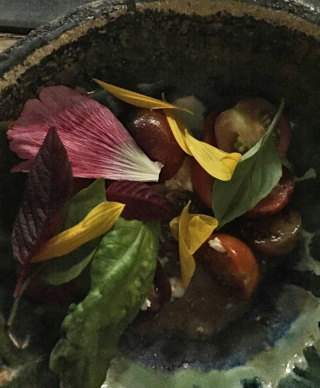
Chef Diego's lovely and refreshing tomato salad, topped with edible flower petals. The dining room at Corazón de Tierra was quite dark, giving a dark, dream-like quality to the dishes we ate–and to the photos I took.

Tiny potatoes, deeply flavorful, coupled with mildly spicy chiles padrón, and tender leaves of various colors, all served with deliberately aged five-year-old salad dressing.
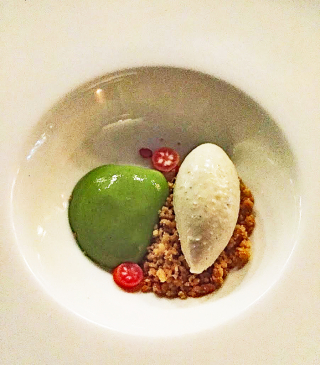
The presentation of sesame seed ice cream with cilantro cream, served on a bed of crunchy, sweet crumble was perfectly beautiful, but was my least favorite item on the menu. Others raved about it.
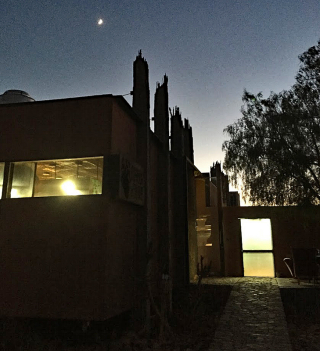
This fantastic dinner at Corazón de Tierra ended as the moon rose over the restaurant in Valle de Guadalupe. The trek back to our Rosarito condo was quiet and reflexive after our long and wonderful day.
Special thanks to Cintia Soto for taking menu notes in the dark!
Next week: we'll take a short break from Baja California for a special trip to Michoacán, for Noche de Muertos (Night of the Dead). On November 4, we'll go to Ensenada for Baja California street food, and a surprise! Don't miss either one.
Looking for a tailored-to-your-interests specialized tour in Mexico? Click here: Tours.



